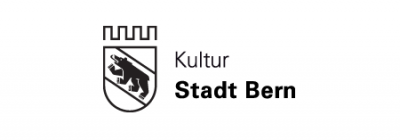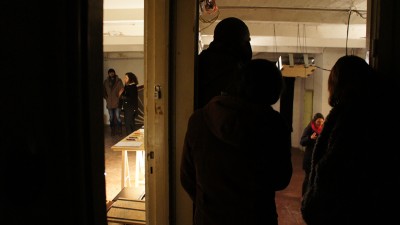The Casting:
About honesty, prejudice, violence, the fiction and the truth
PRESENT TENSE SERIES V 11.10.2014 18:00
with Omar Ghayatt
Curator Chiara Cartuccia
Excuse me, all of you! Why are you so anxious to destroy in the name of a vulgar, commonplace sense of truth, this reality which comes to birth attracted and formed by the magic of the stage itself, which has indeed more right to live here than you, since it is much truer than you?
Omar Ghayatt is a performance artist, a theatre director and an avid researcher of the possibilities of performativity, whose work stems from a punctual analysis of the mechanism constituting the basis of our social living. Ghayatt’s artistic production is focused on visuality, here to be meant as investigation of the power of images, which are not intended as mere results of composition strategies, but as something the staged actions evoke in spectators’ minds, without directly showing it. In most of his performative interventions Ghayatt uses body’s movement, noise, music and spoken word as keen instruments, harmonized one to the other as members of an orchestra, in order to visually symbolize his peculiar understanding of a specific aspect of life.
The images giving body to Ghayatt’s performances have the capability to sound out certain inner characteristics of artist’s individual relation with the external world, as geo-political environment, but also as intimate, sentimental space. Ghayatt’s projects are characterized by the use of a precise personal prospective, since the main source of the artist’s performative experimentation is his private history of young Egyptian man immigrating to a rich European country, facing everyday stereotypes, misunderstandings and poor prejudices characterizing the life of every migrant. The intimacy, delicacy and irony with which Ghayatt touches difficult topics, of such high political relevance, have the power to stimulate a stronger engagement of the audience. Attending to Ghayatt’s performances spectators naturally familiarize with experiences that, in most of the cases, didn’t touch them personally, elaborating a larger sense of proximity and awareness of the issues the piece aims to explore and put into discussion.
Ghayatt prefers evocation to representation, even, or maybe particularly, when his performances take place on a theatre’s stage. In one of his latest theatrical pieces, Violence Lointaine/Distant Violence (ideated in collaboration with French musician Maxime Denuc and Congolese choreographer DeLaVallet Bidiefono, during a period of residency in Brazzaville, Congo) the artist explores the topic of violence, without showing any kind of violent act. In this performance violence surrounds the performers and their actions as a far echo, being present on the stage as violence is actually present in the lives of people indirectly witnessing others’ pain and sorrow, while staying in remote, safe places. This kind of distant violence is manifest and undeniably real, yet blurry and intangible, and its evidence is easy to be forgotten, for distracted spectators. The theatre works here as a vehicle to convert remoteness and ignorance into closeness and consciousness.
With works like Violence Lointaine (2014), or If I weren’t Egyptian (2011) Ghayatt seems to follow the path opened by Antonin Artaud’s Theatre of Cruelty, embracing the idea that theatre in not representation, instead, as Derrida states: “[Theatre] is life itself, in the extent to which life is not representable. … Artaud wants to have done with the imitative concept of art. … Theatrical art should be primordial and privileged site of this destruction of imitation” (Derrida, J., Thévenin, P., The Secret Art of Antonin Artaud, tr. Mary Ann Caws. Cambridge, MA: MIT Press, 1998). The two discourses Ghayatt develops, the one taking place in art galleries and performance art festivals, and the other happening in theatres, are just two sides of this same creative intention: the artist does not want to draw a separation line between visual arts and performing arts, and not even between fiction and reality. All Ghayatt’s works have the potential to unveil truths normally hidden behind social conventions, which disappear as soon as the action is presented in the context of a performative apparatus. The stage (either real or metaphorical) is the place allowing this maximization of honesty, of truthfulness, able to cast new lights on less obvious features of common reality, as well as on the dynamics of human behaviours and convictions.
On Saturday, 11th October 2014, within the framework of Present Tense Series, performance art program of SAVVY Contemporary for the year 2014, Omar Ghayatt will present his internationally renowned interaction performance piece The Casting; this performance is a real casting arranged among the spectators and the artist to fulfil several roles, in order to stage a short theatrical representation of a love quadrangle. In this scenario Ghayatt covers the double-role of director and actor. The performance aims at testing the participants, and their inclinations towards aggressive behaviours under the influence of emotions associated with the acted scene. The Casting is a more subtle investigation of the theme human violence, a topic widely inspected by Ghayatt in his latest works in theatre. In the course of the action the spectators/actors are pushed to their limits, forced to experiment with their own social attitude, to deal with their most hidden mental barriers and prejudices. Covered by the role of the actor the spectator is free to disclose his/her secret nature, to be “more real than reality”, as the artist states.
Together with The Castingan additional, one-on-one performative intervention, exclusively conceived for SAVVY Contemporary, will be presented. During the same evening the audience will also have the chance to attend an artist talk, in the context of which Omar Ghayatt will speak about his work in the field of performance art, and will discuss his artistic experimentations with post-dramatic theatre.
Omar Ghayatt was born in Cairo in 1976; in 1998 he received his B.A. in Arts and Education. An early interest in drama, combined with a strong sense for the visual, led him to develop his own characteristic blend of performance art, visual theatre, and scenography. In 2003 he received the first state prize ever awarded in Egypt for performance art. The following years, he performed in various countries such as France, Bosnia, Turkey, Korea and Poland. Alongside his travels, he organized a long-term project in Egypt, Sabeel Cairo, with the aim to promote performance art in the area. In 2007, Ghayatt travelled to theatre Schlachthaus Bern as an artist in residence of “Pro Helvetia”. In March 2008, he initiated the project “Made in Paradise”, in collaboration with the Swiss artists Yan Duyvendak and Nicole Borgeat. In 2009 Ghayatt obtained his Master of Scenography from the Zürcher Hochschule der Künste Zhdk, and in 2010 received a studio in the “PROGR” centre for culture production as a grant from the city of Bern. In 2011 the artist ideated If I Weren’t Egyptian, a visual theatre project based on a text by Alaa Al Aswani. Ghayatt latest project is Violence Lointaine, a dance / performance piece, developed in collaboration with the Congolese choreographer DeLaVallet Bidiefono, and the French sound artist Maxime Denuc.
For more information please visit: ghayatt.com
Kindly supported by:


